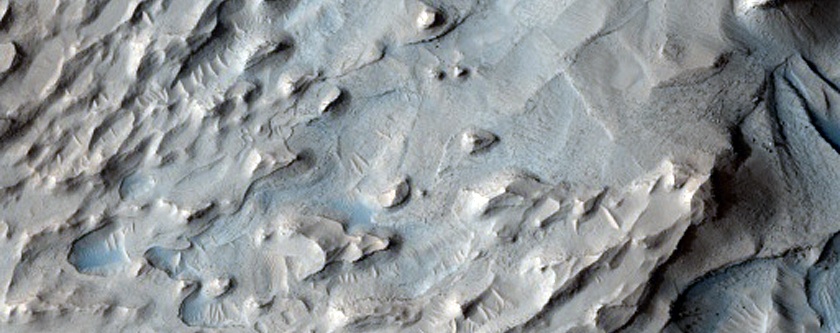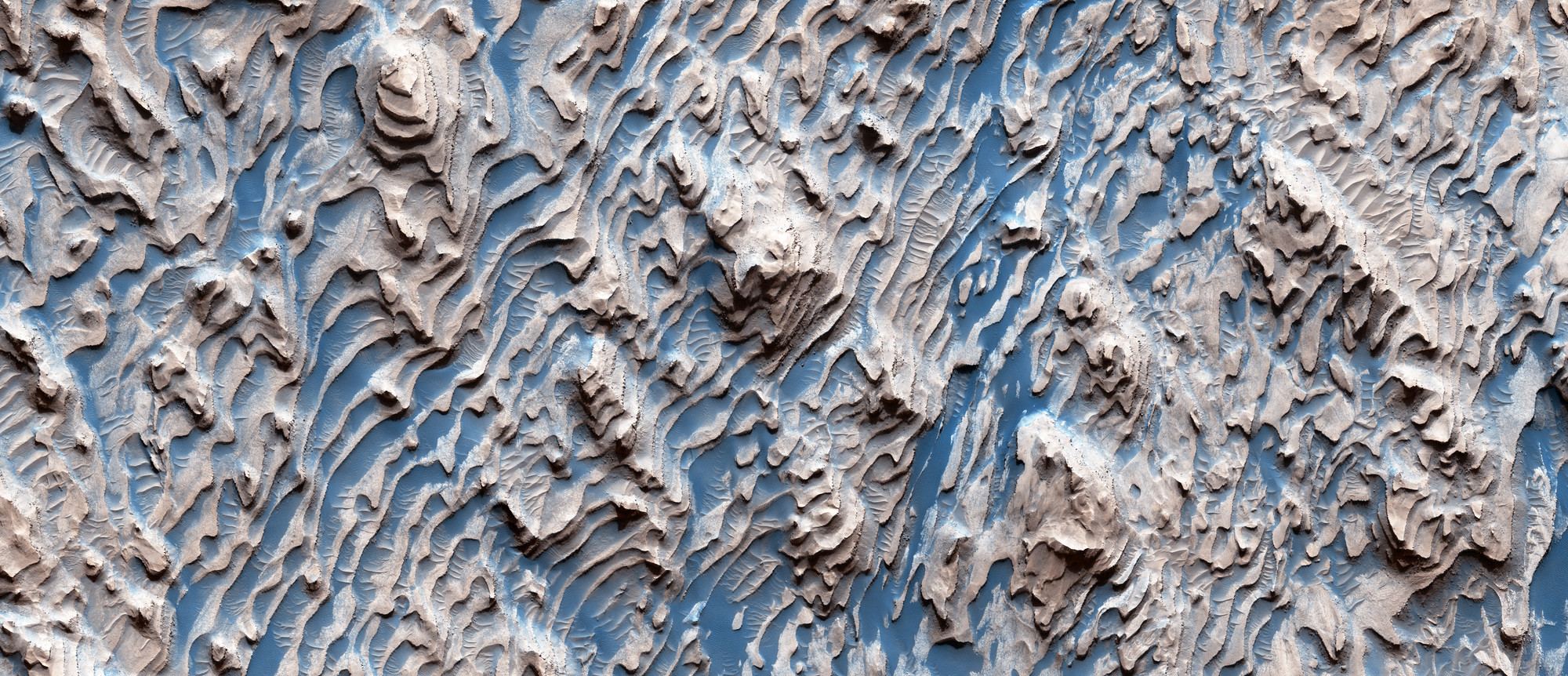If we’ve learned anything about Mars the past 2-3 decades from the various rovers, landers and orbiters we’ve sent to the Red Planet, it’s that the planet’s geologic history is much more complicated and diverse than what we thought.
This picture from the HiRISE (High Resolution Imaging Science Experiment) camera on the Mars Reconnaissance Orbiter shows fractured sedimentary rock inside a crater called Danielson. Sedimentary rock is a sure sign that this planet was active in the past. The fracturing, layering and terrace-like structures suggests a long-term watery history in this region.
Studying sedimentary rocks up close is enticing because each of the layers contains a record or a snapshot of the environment on Mars through time.

Before our in-situ observations of the planet, Mars was thought to be principally a volcanic planet, where the surface features were due to eruptions of lavas and volcanic deposits. But even from some of the first orbiters, scientists could see networks of large outflow channels and the transport of materials to create sedimentary landscapes in the plains of Mars.
Because sedimentary rocks are formed on or near the surface of a planet — in contrast to volcanic rocks, which are formed deep within a planet – this changed our perceptions of Mars’ past.
Now, with surface explorations of rovers like Curiosity and Perseverance, our new view of Mars is that it had a rich history of interactions between water and the surface. Surface features show weathering and movement due to water transport.
“Surprisingly thick accumulations of stratified rocks extend back into the Noachian Era—the oldest of which were likely formed over 4 billion years ago, making these rocks much older than any sedimentary rocks preserved on Earth,” said John Grotzinger, Project Scientists for the Curiosity rover, in a book he wrote on the geologic history of Mars.

HiRISE scientist and co-investigator Collin Dundas says these images from orbit show classic examples of Martian sedimentary rock, where the layers are regularly spaced, forming steps or terraces.
“It is not known with certainty how these rocks formed,” Dundas wrote on the HiRISE website, “but the regularity of the layers suggests a process that repeated many times, perhaps on annual or longer timescales. This suggests that the layers did not accumulate in a series of random events, as layers of crater ejecta might.”
The Perseverance rover is now studying the layers of sedimentary rock in Jezero crater on Mars. It’s investigations should provide more insights as to why the climate of Mars changed dramatically in the planet’s geologic history and whether or not life ever existed on the Red Planet.
MRO has been orbiting Mars since 2006, and you can see all of the amazing HiRISE images taken over the years on the team’s website or on their Flickr page.

